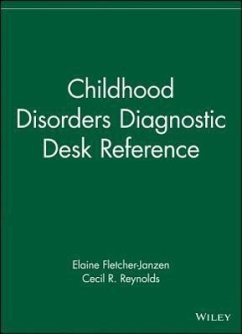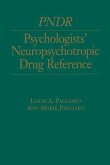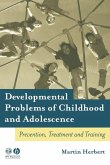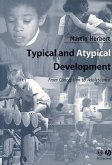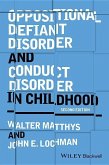The Childhood Disorders Diagnostic Desk Reference provides detailed information on the identification, prevalence, treatment, and ramifications of hundreds of childhood disorders. Written in nonmedical terms, this go-to reference presents in a single source the critical information you need to refer an affected child to a qualified physician or other specialist, hold a conference with the childs caregivers, and appropriately tailor an educational experience to fit the childs abilities. Spanning the pediatric medical, psychiatric, and educational fields, the range of disorders and diseases covered includes rare disorders coupled with hard-to-find information regarding more frequently encountered childhood disorders. Each of the nearly 700 entries provides: A definition of the disorder Special education concerns Incidence and prevalence rates Prognosis and future research Characteristics of the disorder References Treatment methods Complete with both an extensive symptom index and resources for further investigation, Childhood Disorders Diagnostic Desk Reference is the ideal volume for administrators, educators, social workers, and mental health professionals working in schools.
Hinweis: Dieser Artikel kann nur an eine deutsche Lieferadresse ausgeliefert werden.
Hinweis: Dieser Artikel kann nur an eine deutsche Lieferadresse ausgeliefert werden.
Book collaborators (Encyclopedia of Special Education, 2d ed.) andcollege educators Fletcher-Janzen (Univ. of Northern Colorado) andReynolds (Texas A&M Univ.) have edited a text-dense referencework geared toward those working in the fields of child psychology,special education, neurology, and pediatrics, as well as toward theinterested lay reader. As they state in the preface,"Many children with the disorders listed in this wok willalso require special education services." The almost 200contributors, mostly academicians from U. S. universities, havewritten 700 entries describing a wide variety of childhooddisorders, ranging from frequently seen (e.g., Down syndrome) torare (e.g., Wildervanck syndrome). Many other rare syndromes (e.g.,Canavan disease) have been omitted, but psychiatric disturbancessuch as Emotional Lability are included. See and See alsoreferences are used selectively. Each entry includes a definition,statistics, characteristics, treatment, special education concerns(e.g., children with Marie's ataxia need to have"special seating arrangements, safety devises, and increasedsupervision"), prognosis, and bibliogra phic references fromboth print and online sources. Because URLs go out of date sorapidly, the reader may become frustrated; for example, thefrequently cited National Organization for Rare Diseases (NORD) isno longer located at www.stepstn.com but at www.rarediseases.org.There are a small number of bland-and-white photographs and anintegrated subject and symptom index. Those patrons seeking morescientific information on the topics discussed here may wish toconsult a free database, such as Online Mendelian Inheritance inMan (OMIM; www.ncbi.nlm.nih.gov/omim), while those seeking moregeneral information will find that James Wynbrandt and MarkLudman's The Encyclopedia of Genetic Disorders and BirthDefects, 2d ed., covers the middle ground. Unlike GreyHouse's The Complete Directory for Pediatric Disorders,2002 Edition, this volume does not include wide-ranging listsof national organizations, support groups, or summer camps. If yourlibrary's budget allows, this text would be a welcomeaddition to college libraries offering degrees in education, aswell as the professional reading shelves of counselors, nurses, andspecial education teachers in any school. -Martha E. Stone,Massachusetts General Hosp. Lib., Boston. (Library Journal,July, 2003)
...the text is well-organized, written in understandable termsand has the treatment and intervention options all in oneplace...Even with the Internet, it would be difficult to find theeducational and treatment suggestions found in this text. ChildhoodDisorders: Diagnostic Desk Reference is an excellent resource andone may find it very tempting to sit and sift through thetremendous range of disorders/syndromes. (Tom Cushman, Ph.D. NASPCommuniqué - September 2004)"Childhood Disorders Diagnostic Desk Reference" is literally the Ato Z of childhood disorders and a must for all physicians who carefor the pediatric patient.
Richard Bartlett, M.D., EMT-P, BS. M.T.
Medical Expert, CBS-7 Ask the Expert
Texas Health Disparities Taskforce
Governor Appointed Former U.S. Congressional Candidate
Ector County Medical Society Secretary-Treasurer
Advanced Trauma Life Support Instructor
Greater West Texas Alzheimer Medical Advisor
Past Medical Director: Southern Ambulance
Crane County Care Center Nursing Home
Home Sweet healthy Heart Center Home Health Service
...the text is well-organized, written in understandable termsand has the treatment and intervention options all in oneplace...Even with the Internet, it would be difficult to find theeducational and treatment suggestions found in this text. ChildhoodDisorders: Diagnostic Desk Reference is an excellent resource andone may find it very tempting to sit and sift through thetremendous range of disorders/syndromes. (Tom Cushman, Ph.D. NASPCommuniqué - September 2004)"Childhood Disorders Diagnostic Desk Reference" is literally the Ato Z of childhood disorders and a must for all physicians who carefor the pediatric patient.
Richard Bartlett, M.D., EMT-P, BS. M.T.
Medical Expert, CBS-7 Ask the Expert
Texas Health Disparities Taskforce
Governor Appointed Former U.S. Congressional Candidate
Ector County Medical Society Secretary-Treasurer
Advanced Trauma Life Support Instructor
Greater West Texas Alzheimer Medical Advisor
Past Medical Director: Southern Ambulance
Crane County Care Center Nursing Home
Home Sweet healthy Heart Center Home Health Service

